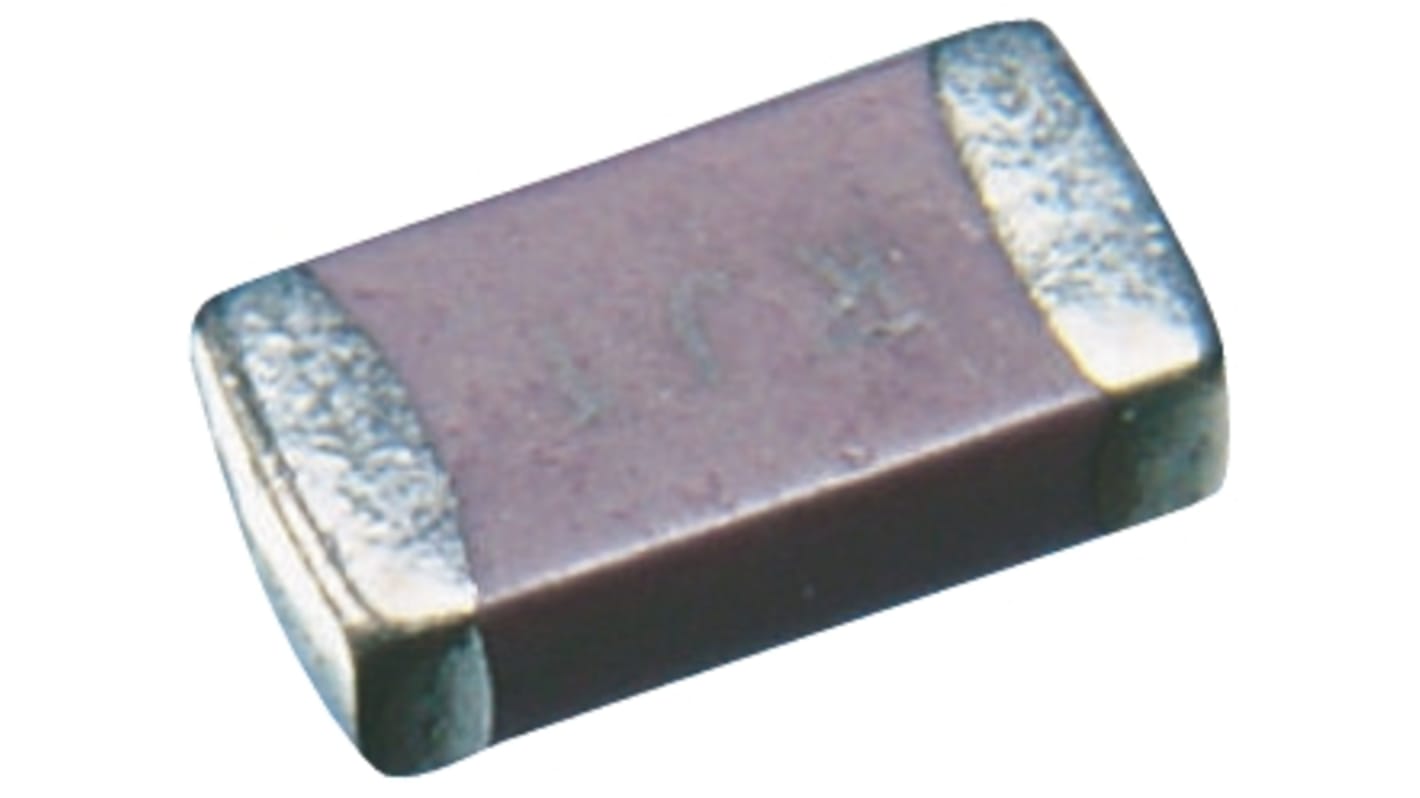KEMET 330nF Multilayer Ceramic Capacitor MLCC, 50V dc V, ±10% , SMD
- RS Stock No.:
- 803-0021
- Mfr. Part No.:
- C1206C334K5RACTU
- Brand:
- KEMET

Subtotal (1 pack of 25 units)*
£2.45
(exc. VAT)
£2.95
(inc. VAT)
FREE delivery for orders over £50.00
In Stock
- 200 unit(s) ready to ship
- Plus 100 unit(s) ready to ship from another location
- Plus 22,325 unit(s) shipping from 11 November 2025
Need more? Click ‘Check delivery dates’ to find extra stock and lead times.
Units | Per unit | Per Pack* |
|---|---|---|
| 25 + | £0.098 | £2.45 |
*price indicative
- RS Stock No.:
- 803-0021
- Mfr. Part No.:
- C1206C334K5RACTU
- Brand:
- KEMET
Specifications
Technical Reference
Legislation and Compliance
Product Details
Find similar products by selecting one or more attributes.
Select all | Attribute | Value |
|---|---|---|
| Brand | KEMET | |
| Capacitance | 330nF | |
| Voltage | 50V dc | |
| Package/Case | 1206 (3216M) | |
| Mounting Type | Surface Mount | |
| Dielectric | X7R | |
| Tolerance | ±10% | |
| Dimensions | 3.2 x 1.6 x 0.9mm | |
| Length | 3.2mm | |
| Depth | 1.6mm | |
| Height | 0.9mm | |
| Series | C | |
| Maximum Operating Temperature | +125°C | |
| Minimum Operating Temperature | -55°C | |
| Select all | ||
|---|---|---|
Brand KEMET | ||
Capacitance 330nF | ||
Voltage 50V dc | ||
Package/Case 1206 (3216M) | ||
Mounting Type Surface Mount | ||
Dielectric X7R | ||
Tolerance ±10% | ||
Dimensions 3.2 x 1.6 x 0.9mm | ||
Length 3.2mm | ||
Depth 1.6mm | ||
Height 0.9mm | ||
Series C | ||
Maximum Operating Temperature +125°C | ||
Minimum Operating Temperature -55°C | ||
Kemet 1206 Automotive Grade SMT MLCC Ceramic Capacitors
1206 size AEC–Q200 automotive qualified SMT MLCC ceramic capacitors with a robust design suitable for harsh environments. These automotive grade SMT MLCC ceramic capacitors have a C0G dielectric with an operating temperature range of -55 to +125°C and offer a high thermal stability, a high ripple current capability and an extremely low ESR and ESL. Typical applications for these automotive grade SMT MLCC capacitors include in-cabin or under-hood mission and safety critical automotive circuits such as critical timing, tuning, circuits requiring low loss, circuits with pulse, high current, decoupling, bypass, filtering, transient voltage suppression, blocking and energy storage.
Approvals
AEC–Q200 automotive qualified
1206 Range
C0G (NP0) is the most popular formulation of the "temperature-compensating", EIA Class I ceramic materials
X7R formulations are called "temperature stable" ceramics and fall into EIA Class II materials
Y5V formulations are for general-purpose use in a limited temperature range.These characteristics make Y5V ideal for decoupling applications
X7R formulations are called "temperature stable" ceramics and fall into EIA Class II materials
Y5V formulations are for general-purpose use in a limited temperature range.These characteristics make Y5V ideal for decoupling applications
Related links
- KEMET 330nF Multilayer Ceramic Capacitor MLCC ±10% , SMD
- KEMET 330nF Multilayer Ceramic Capacitor MLCC ±10% , SMD
- KEMET 330nF Multilayer Ceramic Capacitor MLCC ±10% , SMD
- KEMET 330nF Multilayer Ceramic Capacitor MLCC ±10% , SMD
- KEMET 330nF Multilayer Ceramic Capacitor MLCC ±20% , Through Hole
- KEMET 330nF Multilayer Ceramic Capacitor MLCC ±20% , Axial
- KEMET 330nF Multilayer Ceramic Capacitor MLCC 50V dc ±20% Z5U Dielectric, Max. Temp. +85°C
- KEMET 330nF Multilayer Ceramic Capacitor MLCC ±10% , Through Hole
